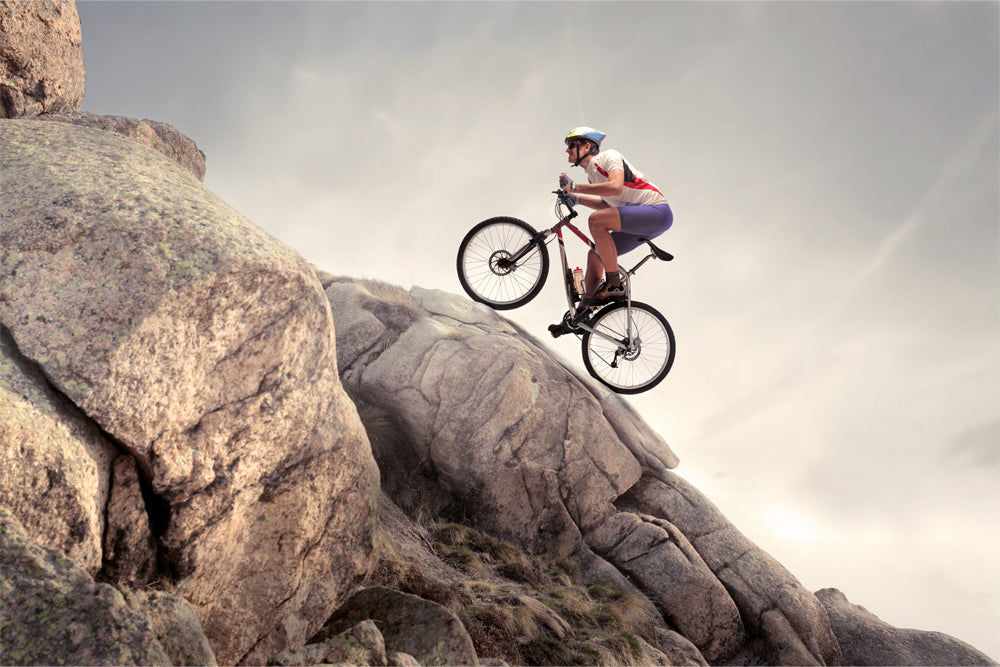Cycling uphill can be a daunting task for many cyclists, but it is an essential skill to master if you want to take your cycling to the next level. In this blog post, we will provide you with some tips on how to master the art of uphill cycling.
Get the Right GearHaving the right gear is crucial for mastering uphill cycling. It starts with having a bike that is lightweight and has a wide range of gears. You should choose a bike with a compact crankset and a wide-range cassette to give you a lower gear ratio for climbing. This will make it easier to maintain a consistent cadence as you climb. Your clothing should also be appropriate for the conditions. Choose clothing that is comfortable and breathable and consider wearing cycling shoes with stiff soles that will help transfer power to the pedals.
Learn Proper TechniqueTo master uphill cycling, it's important to learn proper technique. This includes maintaining a steady pace, using a smooth pedal stroke, and keeping your upper body relaxed. One of the most important things to remember when cycling uphill is to keep a steady pace. This means that you should try to maintain a consistent effort level throughout the climb. This will help you conserve your energy and prevent burnout.
Another important aspect of technique is using a smooth pedal stroke. This means that you should aim to pedal in circles, using both your quadriceps and your hamstrings to push the pedals. This will help you maintain traction and avoid losing momentum.
Keeping your upper body relaxed is also important. Tension in your upper body can cause you to tire more quickly and make it more difficult to maintain good form. Try to keep your shoulders relaxed and your elbows slightly bent.

Building endurance and strength is key to mastering uphill cycling. Endurance is important because climbing requires sustained effort over a longer period than flat terrain. To build endurance, try incorporating longer rides into your training regimen and gradually increase the distance and elevation. This will help you develop the cardiovascular fitness you need to climb for longer periods of time.
Strength is important because climbing requires more power than flat terrain. To build strength, try incorporating hill repeats into your training regimen. Hill repeats involve climbing a hill multiple times in one workout, with recovery periods in between. This will help you develop the leg strength you need to power up hills more easily.
Pace YourselfPacing yourself is crucial when cycling uphill. Starting out too fast can cause you to tire quickly and lose momentum. Instead, start out at a comfortable pace and try to maintain a consistent effort throughout the climb. This may mean shifting to a lower gear and pedalling at a slower rate, but it will help you conserve your energy and avoid burnout.
If you need to take a break, try to do so on a flat section or at the top of a hill. This will allow you to rest without losing momentum. When you resume cycling, try to pick up your pace gradually to avoid straining your muscles.
Stay FocusedStaying focused is important when cycling uphill. Keep your eyes focused on the road ahead and look for obstacles such as rocks or potholes that could cause you to lose traction. Focus on maintaining a smooth pedal stroke and a consistent effort level. You may also want to distract yourself by listening to music or engaging in mental exercises to help you stay motivated.
In addition to these tips, it's also important to stay hydrated and well-fuelled during your ride. Drink water regularly and consider carrying a snack or energy gel to provide your body with the fuel it needs to keep going.
In summary, mastering uphill cycling takes time and practice, but with the right gear, technique, and training, you can become a more efficient and confident climber. Incorporate these tips into your training regimen and see the difference in your uphill cycling performance!

